Top 10 most dangerous jobs in US before 2012
How dangerous is your job?
In August 2008, the Bureau of Labor Statistics (BLS) released its annual report on fatalities in the workplace. According to the preliminary report, there were 5,488 fatal work injuries last year, a 6 percent decrease from 2006, and the lowest number since the BLS started collecting the data in 1992. The final figures will be released in April 2009.
Total deaths in 2007: 143
2006 ranking: Not in the top 10
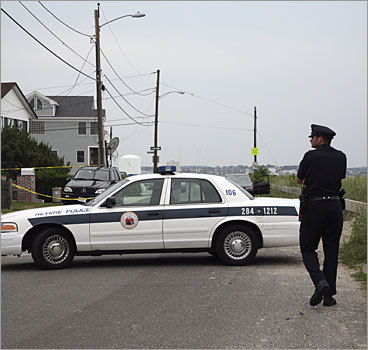
Dangerous aspects: Police and sheriff's patrol officers face danger in their everyday work — from patrolling the streets to pulling over speeding cars and confronting criminals.
More information: Fatalities among police officers rose 30 percent from 2006 to 2007. More officers died in traffic-related incidents than in shootings, according to the National Law Enforcement Officers Memorial Fund.
Total deaths in 2007: 18
2006 ranking: 5
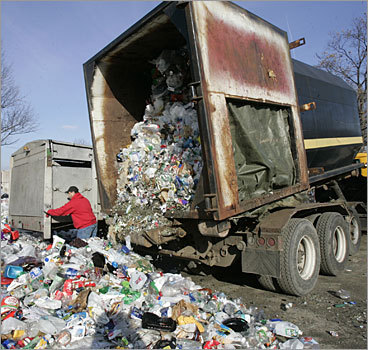
Dangerous aspects: Many refuse and recyclable materials collectors are exposed to harmful fumes, materials, and chemicals in addition to dangerous machinery and bad weather.
More information: The number of deaths in the industry is decreasing as the quality of equipment used by refuse and recycling centers improves, according to the BLS. In 2007, collectors' deaths fell by about half from the previous year.
Total deaths in 2007: 908
2006 ranking: 9
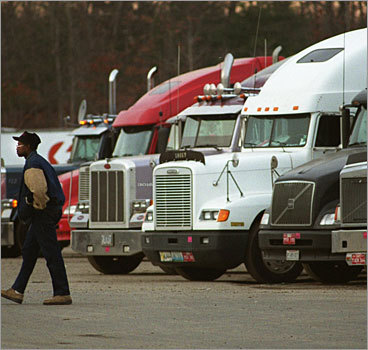
Dangerous aspects: Truck drivers and salesmen who drive for work are on the road for long stretches of time at all hours of the day and night. In addition to facing the physical demands of unloading and loading heavy cargo, drivers can suffer from fatigue, boredom, and exhaustion.
More information: While transportation fatalities across all industries decreased drastically in 2007, the number of deaths among driving sales workers and truckers decreased a minor amount to 26.2 deaths per 100,000 employed last year from 27.1 deaths in 2006, according to the BLS
Total deaths in 2007: 30
2006 ranking: 7
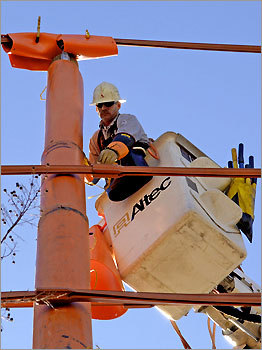
Dangerous aspects: Electrical power-line installers and repairers are in danger of electrocution from high-voltage power lines. In addition, the height of power lines increases the risk of severe injury from a fall.
More information: The fatality rate among electrical workers who install and repair power lines decreased 21 percent from 2006, according to the BLS. Across all industries, electrocutions were down 14 percent from 2003, the next lowest year.
Total deaths in 2007: 79
2006 ranking: 8

Dangerous aspects: Roofers risk slipping and falling from scaffolds, ladders, or roofs. During the summer, roofs can become very hot and cause heat-related injuries like burns and dehydration.
More information: The number of falls from roofs across all industries dropped 13 percent to 161 falls in 2007 from 185 in 2006, according to the BLS
Total deaths in 2007: 285
2006 ranking: 6
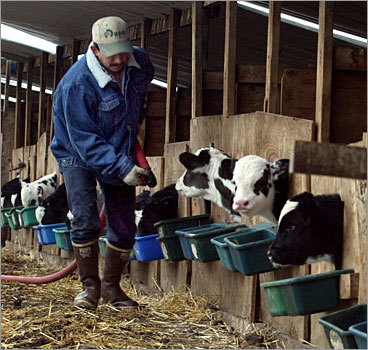
Dangerous aspects: Farmers' work is physically strenuous, takes place outdoors regardless of weather conditions, and often exposes workers to pesticides and heavy equipment. In addition, working with animals raises the risk of being kicked or bitten.
More information: The fatality rate among farmers and ranchers was unchanged between 2007 from 2006, according to the BLS
Total deaths in 2007: 40
2006 ranking: 4
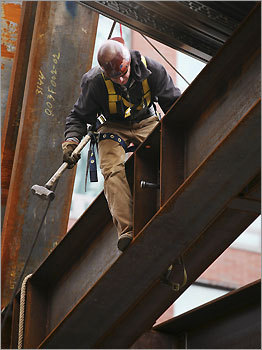
Dangerous aspects: The risk of falling is high for structural iron and steel workers who work at extreme heights in a variety of weather conditions.
More information: The fatality rate for these workers decreased by 24 percent in 2007 from a year earlier, according to the BLS.
Total deaths in 2007: 82
2006 ranking: 2
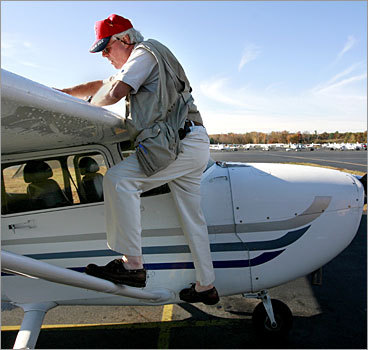
Dangerous aspects: Different types of pilots experience different on-the-job hazards — from commercial pilots experiencing jet-lag to test pilots working with experimental planes to crop-duster pilots being exposed to hazardous chemicals.
More information: Aircraft pilots and flight engineers had the second most deadliest job in the country in 2006, according to the BLS. In 2007, the fatality rate decreased by 24 percent.
Total deaths in 2007: 76
2006 ranking: 3
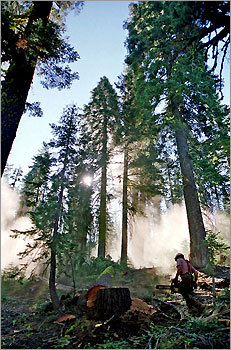
Dangerous aspects: Loggers deal with the dangers associated with tree-felling and log-handling. Poisonous plants, insects, and animals, and extreme weather conditions are also everyday risks.
More information: The fatality rate for loggers increased 4 percent last year. However, this number is still lower than 2004 when logging was the most dangerous job with 92 deaths per 100,000 employed, according to the BLS.
Total deaths in 2007: 38
2006 ranking: 1

Dangerous aspects: From dangerous weather to slippery decks, fishermen and their crews experience some of the most hazardous conditions of any occupation. When injuries occur on a ship, transportation to a hospital or doctor is often unavailable. Other dangers include entanglement in fishing gear, being swept overboard, and shipwrecks or collisions.
More information: Fishers and related fishing workers have topped the list of occupational fatalities for the past three years, although the rate of fatalities did decrease from 2007 to 2006 by 21 percent, according to the BLS.
In August 2008, the Bureau of Labor Statistics (BLS) released its annual report on fatalities in the workplace. According to the preliminary report, there were 5,488 fatal work injuries last year, a 6 percent decrease from 2006, and the lowest number since the BLS started collecting the data in 1992. The final figures will be released in April 2009.
10. Police and sheriff's patrol officers
2007 fatality rate: 21.4 per 100,000 employedTotal deaths in 2007: 143
2006 ranking: Not in the top 10

Dangerous aspects: Police and sheriff's patrol officers face danger in their everyday work — from patrolling the streets to pulling over speeding cars and confronting criminals.
More information: Fatalities among police officers rose 30 percent from 2006 to 2007. More officers died in traffic-related incidents than in shootings, according to the National Law Enforcement Officers Memorial Fund.
9. Garbage collectors
2007 fatality rate: 22.8 per 100,000 employedTotal deaths in 2007: 18
2006 ranking: 5

Dangerous aspects: Many refuse and recyclable materials collectors are exposed to harmful fumes, materials, and chemicals in addition to dangerous machinery and bad weather.
More information: The number of deaths in the industry is decreasing as the quality of equipment used by refuse and recycling centers improves, according to the BLS. In 2007, collectors' deaths fell by about half from the previous year.
8. Truck drivers
2007 fatality rate: 26.2 per 100,000 employedTotal deaths in 2007: 908
2006 ranking: 9

Dangerous aspects: Truck drivers and salesmen who drive for work are on the road for long stretches of time at all hours of the day and night. In addition to facing the physical demands of unloading and loading heavy cargo, drivers can suffer from fatigue, boredom, and exhaustion.
More information: While transportation fatalities across all industries decreased drastically in 2007, the number of deaths among driving sales workers and truckers decreased a minor amount to 26.2 deaths per 100,000 employed last year from 27.1 deaths in 2006, according to the BLS
7. Power-line workers
2007 fatality rate: 29.1 per 100,000 employedTotal deaths in 2007: 30
2006 ranking: 7

Dangerous aspects: Electrical power-line installers and repairers are in danger of electrocution from high-voltage power lines. In addition, the height of power lines increases the risk of severe injury from a fall.
More information: The fatality rate among electrical workers who install and repair power lines decreased 21 percent from 2006, according to the BLS. Across all industries, electrocutions were down 14 percent from 2003, the next lowest year.
6. Roofers
2007 fatality rate: 29.4 per 100,000 employedTotal deaths in 2007: 79
2006 ranking: 8

Dangerous aspects: Roofers risk slipping and falling from scaffolds, ladders, or roofs. During the summer, roofs can become very hot and cause heat-related injuries like burns and dehydration.
More information: The number of falls from roofs across all industries dropped 13 percent to 161 falls in 2007 from 185 in 2006, according to the BLS
5. Farmers and ranchers
2007 fatality rate: 38.4 per 100,000 employedTotal deaths in 2007: 285
2006 ranking: 6

Dangerous aspects: Farmers' work is physically strenuous, takes place outdoors regardless of weather conditions, and often exposes workers to pesticides and heavy equipment. In addition, working with animals raises the risk of being kicked or bitten.
More information: The fatality rate among farmers and ranchers was unchanged between 2007 from 2006, according to the BLS
4. Structural iron and steel workers
2007 fatality rate: 45.5 per 100,000 employedTotal deaths in 2007: 40
2006 ranking: 4

Dangerous aspects: The risk of falling is high for structural iron and steel workers who work at extreme heights in a variety of weather conditions.
More information: The fatality rate for these workers decreased by 24 percent in 2007 from a year earlier, according to the BLS.
3. Aircraft pilots and flight engineers
2007 fatality rate: 66.7 per 100,000 employedTotal deaths in 2007: 82
2006 ranking: 2

Dangerous aspects: Different types of pilots experience different on-the-job hazards — from commercial pilots experiencing jet-lag to test pilots working with experimental planes to crop-duster pilots being exposed to hazardous chemicals.
More information: Aircraft pilots and flight engineers had the second most deadliest job in the country in 2006, according to the BLS. In 2007, the fatality rate decreased by 24 percent.
2. Logging workers
2007 fatality rate: 86.4 per 100,000 employedTotal deaths in 2007: 76
2006 ranking: 3

Dangerous aspects: Loggers deal with the dangers associated with tree-felling and log-handling. Poisonous plants, insects, and animals, and extreme weather conditions are also everyday risks.
More information: The fatality rate for loggers increased 4 percent last year. However, this number is still lower than 2004 when logging was the most dangerous job with 92 deaths per 100,000 employed, according to the BLS.
1. Fishermen
2007 fatality rate: 111.8 per 100,000 employedTotal deaths in 2007: 38
2006 ranking: 1

Dangerous aspects: From dangerous weather to slippery decks, fishermen and their crews experience some of the most hazardous conditions of any occupation. When injuries occur on a ship, transportation to a hospital or doctor is often unavailable. Other dangers include entanglement in fishing gear, being swept overboard, and shipwrecks or collisions.
More information: Fishers and related fishing workers have topped the list of occupational fatalities for the past three years, although the rate of fatalities did decrease from 2007 to 2006 by 21 percent, according to the BLS.
















